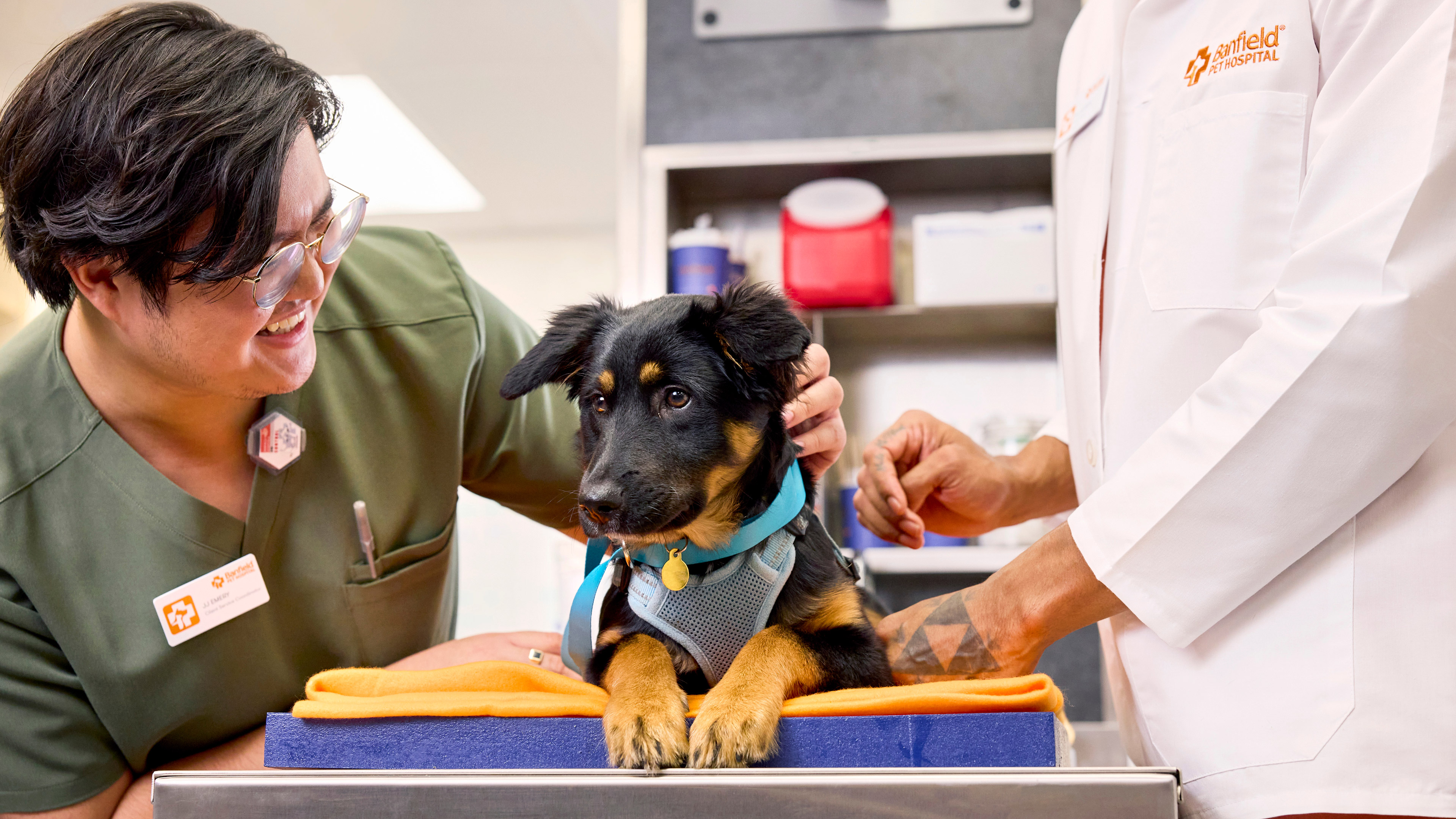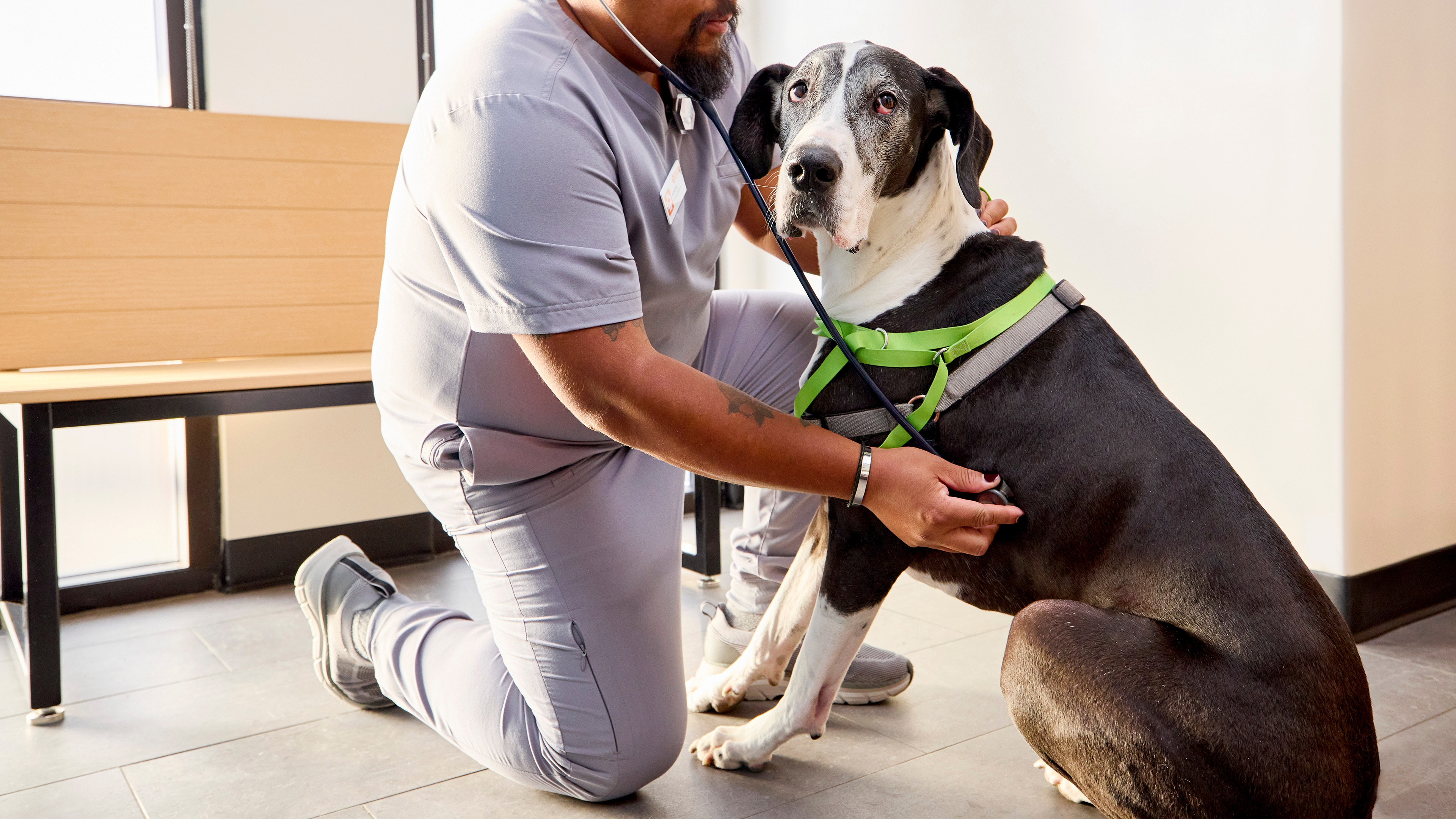tapeworms in dogs and cats: what pet owners should know
Tapeworms aren’t exactly dinner table conversation, but if you’re a pet owner, they’re worth knowing about. These long, flat parasites can make themselves at home in your dog’s or cat’s intestines. But the good news is, they’re typically treatable and preventable.
In this blog, we’ll cover what tapeworms are, how dogs and cats get tapeworm, signs to look out for, and what you can do to keep your furry friend safe.
What exactly is a tapeworm?
Tapeworms are intestinal parasites with long, segmented bodies. Each little segment (called a proglottid) contains eggs. Think of them like rice grains that break off and exit the body, usually in your pet’s stool, under their tail, or in the fur surrounding the anus. While it’s not the most glamorous sight, it’s one of the most obvious signs of infection.
The most common species in pets is Dipylidium caninum, which relies on fleas to complete its life cycle. When a pet swallows an infected flea (often during grooming), the tapeworm takes advantage of the free ride and begins developing inside the intestines.
How pets get tapeworms
Most dogs and cats contract tapeworms by ingesting something that carries tapeworm larvae. Common sources include:
- Fleas
- Ingesting infected rodents or rabbits
- Contaminated food or raw meat
Signs your pet might have tapeworms
Here are some clues to look out for:
- Rice-like segments in stool, bedding, or around the anus
- Scooting (dragging their bottom) across the carpet or grass
- Licking or chewing at their rear end
- Weight loss with no apparent cause
- Abdominal distension (a swollen-looking tummy)
- Diarrhea or vomiting
If your pet is experiencing these symptoms, it’s time to give your vet a call.
Are tapeworms contagious to humans?
Yes — though it’s rare. Humans can accidentally swallow an infected flea or, less commonly, ingest larvae found in contaminated environments as well as food and water sources. Children are at higher risk because of close contact with pets and play areas.
How tapeworms are diagnosed and treated
If you bring your pet to Banfield with suspected tapeworms, your veterinary team may start with a fecal examination to look for eggs or segments. Owners often spot the evidence first and take photos or bring it in (yes, bagging up a stool sample can actually be very helpful).
Sometimes a fecal exam could come back as negative because the tapeworm is not shedding, but we’ll treat based off a good history at intake if it demonstrates the patient has a high risk due to exposure.
Treatment usually includes:
- Prescription deworming medication (often just a single dose, though sometimes repeat treatment is needed)
- Flea control to stop reinfection
- Follow-up fecal tests to confirm the tapeworms are gone
Thankfully, tapeworms tend to be one of the easier parasites to kick to the curb once they’re identified.
Prevention: keeping tapeworms off the guest list
Preventing tapeworms means tackling their source. Here’s how to lower your pet’s risk:
- Stay consistent with flea prevention year-round, even if your pet stays primarily indoors.
- Discourage hunting or scavenging.
- Avoid raw or undercooked meat in your pet’s diet.
- Maintain clean play spaces by picking up stool promptly and keeping the yard free of wildlife attractants.
- Routine fecal exams at your vet. (Hint: Fecal exams are included in our Optimum Wellness Plans®.)
Tapeworm myths vs. facts
Myth: You’ll always see worms if your pet has them.
Fact: Many infections don’t produce visible signs until they’ve been around for a while.
Myth: Only outdoor pets get tapeworms.
Fact: Indoor pets can get them too — fleas and contaminated prey don’t need a welcome mat and humans can also bring them into the home.
Myth: Tapeworms are not dangerous.
Fact: While they tend not to be fatal, they can cause death in young or immunocompromised pets and pose a risk to humans.
The bottom line
Tapeworms might sound scary, but with preventive care and regular checkups, you can help keep your dog or cat safe. If you notice signs of tapeworms, or if you’re unsure, your Banfield veterinary team is here to help with diagnosis, treatment, and prevention.
Important Notice: The information provided on this page is for informational purposes only and is not a substitute for professional veterinary advice. Always consult a veterinarian with any questions regarding your pet's health or medical condition. Never disregard or delay seeking professional veterinary advice based on information from this page.
 Mites and mange
Mites and mange Podcast - Not Just Fluff
Podcast - Not Just Fluff











